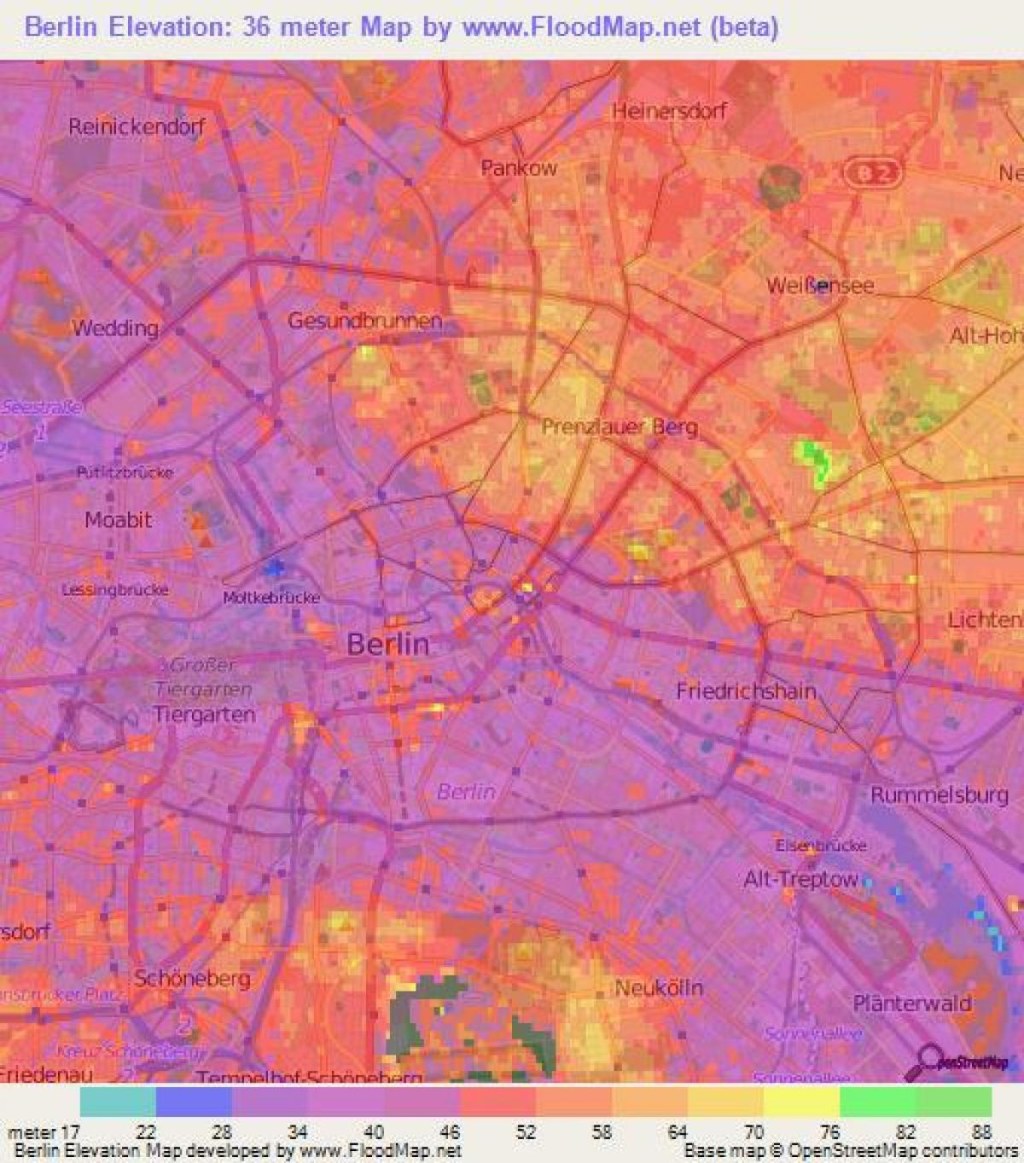Unveiling Berlin Altitude: Elevate Your Experience With Breathtaking Heights!
Berlin Altitude: A Comprehensive Guide to the Altitude of Berlin
Greetings, Berlin Visitors! If you are planning a trip to Berlin or simply curious about the altitude of this vibrant city, you’ve come to the right place. In this article, we will provide you with all the information you need to know about the altitude of Berlin. From its geographical location to the advantages and disadvantages of its altitude, we’ve got you covered. So, let’s dive in!
Introduction
Berlin, the capital city of Germany, is situated in the northeastern part of the country. It is known for its rich history, vibrant culture, and diverse architecture. But have you ever wondered about the altitude of Berlin? Understanding the altitude can provide valuable insights into the climate, landscape, and even the potential health effects for visitors and residents alike.
1 Picture Gallery: Unveiling Berlin Altitude: Elevate Your Experience With Breathtaking Heights!

Before we delve into the details, let’s take a look at the table below, which provides a complete overview of the altitude of Berlin:
Location
Altitude

Image Source: maps-berlin.com
Alexanderplatz
34 meters (112 feet)
Brandenburg Gate
34 meters (112 feet)
Potsdamer Platz
38 meters (125 feet)
Olympiastadion Berlin
53 meters (174 feet)
Teufelsberg
115 meters (377 feet)
Großer Müggelberg
114 meters (374 feet)
What is the Altitude of Berlin?
🗻 The altitude of Berlin refers to the height above sea level at various points in the city. Many parts of Berlin are relatively flat, with an average altitude of approximately 34 meters (112 feet) above sea level. However, there are also elevated areas, such as Teufelsberg and Großer Müggelberg, which reach heights of 115 meters (377 feet) and 114 meters (374 feet) respectively.
Who Determines the Altitude?
📏 The altitude of Berlin is determined by surveying and mapping agencies, such as the Federal Agency for Cartography and Geodesy (BKG) in Germany. These agencies use advanced technology, including GPS and satellite imagery, to accurately measure and record the altitude of various locations in the city.
When Was the Altitude of Berlin Determined?
📅 The altitude of Berlin has been determined over the years through continuous surveys and measurements. The initial mapping and recording of the city’s altitude began in the late 19th century and has since been updated and refined using modern surveying techniques. The most recent measurements were conducted in recent years to ensure the accuracy of the data.
Where Are the Highest and Lowest Points in Berlin?
📍 The highest point in Berlin is the Teufelsberg, located in the Grunewald Forest. It stands at an altitude of 115 meters (377 feet) and offers panoramic views of the city. On the other hand, the lowest point in Berlin is the banks of the River Spree, which flows through the heart of the city at an altitude of approximately 30 meters (98 feet).
Why Does Altitude Matter?
❓ The altitude of a city like Berlin can have various implications. It can affect the climate, precipitation patterns, and even the views and landscapes of the city. Additionally, the altitude can have an impact on the health and well-being of individuals, especially those with respiratory conditions. Understanding the altitude can help visitors and residents prepare for any potential effects and make informed decisions.
How Does Altitude Affect the Climate of Berlin?
⛅ The altitude of Berlin plays a role in shaping its climate. As a relatively low-lying city, Berlin experiences a temperate maritime climate, characterized by mild summers and cool winters. The altitude contributes to the city’s overall weather patterns, including temperature variations, rainfall, and the frequency of foggy days. The elevated areas, such as Teufelsberg and Großer Müggelberg, may experience slightly cooler temperatures and potentially more precipitation compared to the lower-lying areas.
Advantages and Disadvantages of Berlin Altitude
Advantages
✅ 1. Breathtaking Views: The elevated areas of Berlin, such as Teufelsberg, offer stunning panoramic views of the cityscape.
✅ 2. Cooler Temperatures: The higher altitude areas may experience slightly cooler temperatures during hot summer months.
✅ 3. Health Benefits: Some studies suggest that higher altitudes can have positive effects on respiratory conditions, such as asthma.
Disadvantages
❌ 1. Potential Health Effects: Individuals with respiratory conditions may experience difficulties due to the higher altitude.
❌ 2. Higher Precipitation: Elevated areas may receive more precipitation, which can affect outdoor activities.
❌ 3. Limited Accessibility: Climbing steep hills or stairs in elevated areas may pose challenges for individuals with mobility issues.
Frequently Asked Questions (FAQs)
1. Does the altitude of Berlin vary significantly throughout the city?
🌆 The altitude of Berlin remains relatively consistent throughout the city, with an average of 34 meters (112 feet) above sea level. However, there are elevated areas that offer a change in altitude, such as Teufelsberg and Großer Müggelberg.
2. Are there any health risks associated with the altitude of Berlin?
🏥 While most individuals will not experience any health issues related to the altitude of Berlin, those with respiratory conditions may find the higher altitude challenging. It is advisable to consult with a healthcare professional before visiting if you have any concerns.
3. Can I visit the elevated areas of Berlin even if I have mobility issues?
♿ Yes, most elevated areas in Berlin, such as Teufelsberg and Großer Müggelberg, have accessibility options for individuals with mobility issues. However, it is recommended to check specific locations for accessibility information before visiting.
4. Are there any specific precautions I should take regarding the altitude of Berlin?
🌡️ If you have respiratory conditions, it is advisable to carry any necessary medications and consult with a healthcare professional before your trip. Additionally, staying hydrated and taking breaks when needed can help adjust to any potential altitude-related effects.
5. Can I experience the benefits of higher altitude areas without visiting Teufelsberg or Großer Müggelberg?
🌆 Absolutely! There are several viewpoints throughout the city, such as the Fernsehturm Berlin, where you can enjoy breathtaking views without the need to visit the highest points of Berlin.
Conclusion
In conclusion, understanding the altitude of Berlin provides valuable insights into the climate, views, and potential health effects of the city. With an average altitude of 34 meters (112 feet) above sea level, Berlin offers a blend of flat areas and elevated points, such as Teufelsberg and Großer Müggelberg. While the altitude contributes to the climate and landscape, it may also present advantages and disadvantages, including breathtaking views, cooler temperatures, and potential health effects for individuals with respiratory conditions. As you explore Berlin, don’t miss the opportunity to discover the city from its elevated areas and enjoy the unique perspectives they offer.
📝 Remember to consult with healthcare professionals and make necessary preparations if you have any concerns about the altitude. We hope this comprehensive guide has provided you with valuable information about the altitude of Berlin. Safe travels!
Disclaimer: The information provided in this article is for informational purposes only. The altitude measurements may vary slightly depending on different sources and surveying techniques. Please refer to official surveying agencies and local authorities for the most accurate and up-to-date information.
This post topic: Berlin


